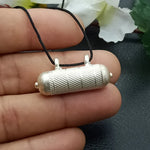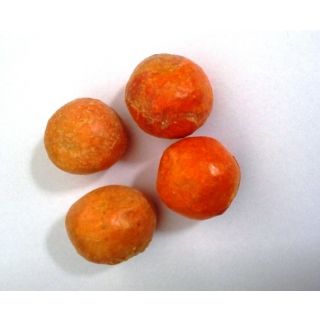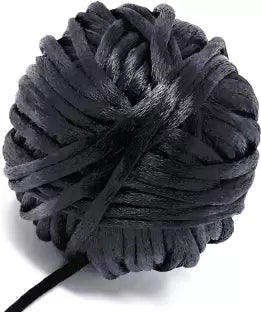Guaranteed safe & secure checkout

A Gorochan Tabeej is a special amulet or charm used in some South Asian cultures, particularly in India. It's believed to have protective and healing powers.The Gorochan Tabeej is a sacred and rare talisman made from Gorochan, a highly revered spiritual substance in Hindu traditions. Known for its mystical and divine properties, this tabeej is believed to attract blessings, remove obstacles, and bring positivity to the wearer’s life.

- Source: Gorochan comes from the bile stones found in the stomachs of certain animals, mainly cows.
- Appearance: It looks like a small yellow or reddish stone or paste.
- Beliefs: People think it has magical properties and can bring good luck, protect from evil.
Benefits of Gorochan Tabeej
-
Brings Good Fortune:
- Attracts luck and opens doors to opportunities for success and growth.
-
Removes Obstacles:
- Helps in overcoming challenges in personal and professional life.
-
Attracts Prosperity:
- Invites wealth, abundance, and success into your life.
-
Enhances Spiritual Growth:
- Deepens your connection with the divine and strengthens faith.
-
Offers Protection:
- Shields the wearer from evil energies, black magic, and negative influences.
-
Improves Relationships:
- Promotes harmony and positivity in relationships by reducing conflicts and misunderstandings.
-
Supports Career and Business:
- Boosts confidence and ensures smooth progress in work and business endeavors.
-
Spreads Positive Vibrations:
- Creates a peaceful and uplifting environment at home and work.
Why Buy Gorochan Tabeej from MahakaalPrasad.com?
-
Authentic and Rare:
- Made from pure and genuine Gorochan, ensuring its spiritual power.
-
Energized for Maximum Benefits:
- The tabeej is energized through Vedic rituals to enhance its effectiveness.
-
Prepared in a Sacred Place:
- Crafted near the holy Mahakaleshwar Jyotirlinga in Ujjain, adding to its divine energy.
-
Expertly Handcrafted:
- Designed with precision and care to maintain its purity and potency.
-
Trusted Source:
- MahakaalPrasad.com is renowned for offering genuine and high-quality spiritual items.
-
Convenient Delivery:
- Safe and secure delivery to your doorstep, ensuring the tabeej remains sanctified.
Historical and Cultural Background
-
Cultural Beliefs:
- Protection: Gorochan is used in amulets to protect against bad luck and negative energies.
-
Cultural Importance:
-
- Tradition: Despite the lack of scientific backing, many people continue to use Gorochan Tabeej because it’s a part of their cultural and religious traditions.
- Symbol of Faith: For many, it represents faith, protection, and a link to ancient practices
-
The Tabeej (Amulet)
-
How It’s Made:
- Encasement: The Gorochan is placed inside a small metal case, There are two types of Gorochan Tabeej the normal tabeej, which is typically encased in a simple(Ashtadhatu) metal and the silver tabeej, which is encased in a more elaborate silver casing, often adorned with religious symbols or mantras for added spiritual significance.
- Design: The case might have religious symbols or mantras engraved on it.
-
How It's Used:
- Personal Wear: People wear the tabeej around their neck, arm, or waist, keeping it close to their bodies.
Specifications of Gorochan Tabeej
-
Material:
- Crafted from rare and pure Gorochan, encased in a protective covering.
-
Size:
- Compact, approximately 1–2 inches, suitable for wearing or carrying.
-
Types Available:
- Standard(Ashtadhatu) Version: Made with durable materials for everyday use.
- Silver Version: Encased in silver for added elegance and strength.
-
Energization:
- Energized with traditional Vedic rituals for enhanced spiritual power.
-
Packaging:
- Comes in a sacred pouch to preserve its energy and purity.
product is genuine good for mental well being
worth buying it thanks to mahakaalprasad.com
I’m very happy with this purchase.
accha tabeej hai sundar bhi hai
This feels like an authentic, powerful item.
Similar products
Customers who viewed this item also viewed
















